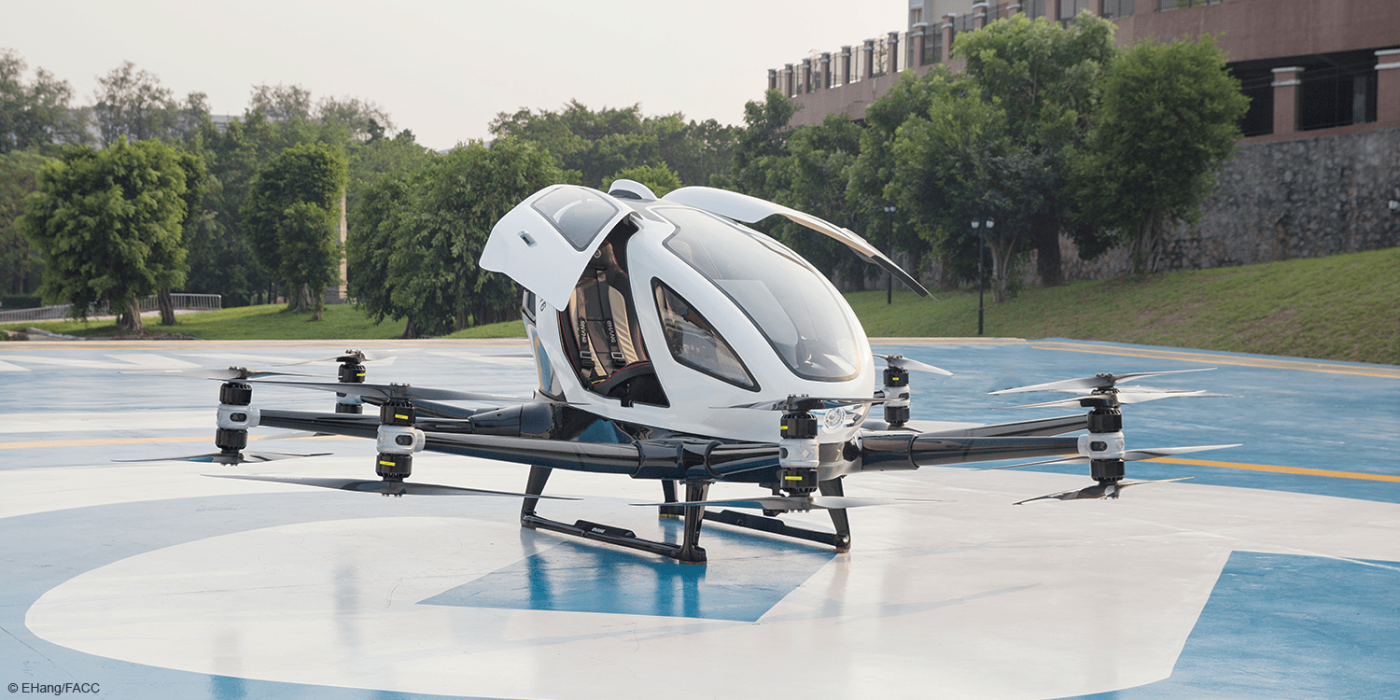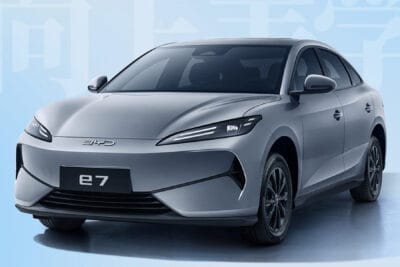Ehang launches autonomous air taxi for 300,000 euros
While the new Ehang aircraft is now affordable at a competitive price around or below that of a conventional helicopter of the same size, the EH216-S is not only electric, it is entirely autonomous, which represents a whole other economic field of business and legislation.
While the UAV is now launched on the market for anyone to buy, legislators and industry leaders in China have long been forging ahead with what is called the “low-altitude economy.” referring to the airspace that is less than 1,000 meters above ground and can be extended up to 4,000 meters according to the characteristics and actual needs regarding the respective landscape.
Because the vehicle can carry passengers but does not require a pilot, the economic space opened up covers new business cases in industrial, scientific, logistics, emergency and civil service and military flights such as evacuation operations. For example, the lack of the need for a pilot enables rescue and evacuation of people in dangerous zones where pilots would otherwise have to risk their lives to get access.
This low altitude economy is described in China as a comprehensive economic form with “strong radiation-driven effect and long industrial chain with a new size and weight category or unmanned aircraft for all kinds of logistics, industrial and passenger transport applications.,” according to an recent article in Chinese media, xinhuanet.
China has been forging ahead with different tested business cases and legislative scenarios for this low altitude economy. In terms of commercial passenger tranport with UAVs, according to xinhuanet (in Chinese), this year, in Shenzhen an “air cab” map was developed anzi Lake Convention and Exhibition Center to Futian CBD (Central Business District) commuter routes. “This enabled the travel time between the two places from the ground 60 minutes shortened to 13 minutes; in Anhui, the world’s first commercial landing of the unmanned aerial vehicle, in Hefei Luogang Park officially realized regular flight.”
Ehang received a type certificate for the EH216-S from the Chinese Civil Aviation Administration CAAC in October 2023. The “Standard Airworthiness Certificate” followed in December, which led to delivery to the first customers. On December 28, the certified EH216-S successfully completed its first commercial flight demonstrations in Guangzhou and Hefei.
With its battery-electric drive, the EH216-S enables a maximum take-off weight of 650 kilograms and a top speed of up to 130 km/h. The maximum flight duration is 25 minutes, which means it is most applicable in those circumstances, such as mountainous and or inhospitable terrain, or from high-rise rooftops in crowded cities, where autonomous aircraft can compliment existing transport cases with significantly shortened travel times.
According to the manufacturer’s announcement, the EH216-S is intended for commercial use, for example for tours at low altitudes or sightseeing flights. Ehang already presented a version of the EH216-S designed for firefighting in high-rise buildings in 2020. The special drone can carry up to 150 liters of extinguishing foam and six “fire bombs”.
In 2020, Ehang announced plans for cooperations on routes in Norway and Spain. At the time, Seville Mayor Juan Espadas Cejas commented: “We look forward to EHang’s first flight in Seville and hope our cooperation will facilitate the commercialization of its UAM ecosystem in Europe.” Now Ehang has made unmanned passenger aircraft affordable, other countries outside of China will have the challenge of new business cases and legislation for these kinds of vehicles.
Mr. Huazhi Hu, Founder, Chairman and CEO of Ehang, noted, “ The low-altitude economy and its related industries present a significant market opportunity for our UAM development and serve as a new engine for future economic growth in China.”
The Ehang CEO reiterated that the company remains committed to “safety in aircraft research, production, operation, and commercial services, which ensures that each of our pilotless aircraft continues to lead in innovation.”
China can expect to benefit from its advances in this sector. The CEO said, “We look forward to collaborating with more global partners, offering consumers a novel experience of safe, autonomous, and eco-friendly air mobility. Our aim is to make pilotless aerial vehicle a common part of everyday life, bringing its benefits to a broader public.”
Update 8 April 2024
Just days after the sales launch on 1 April, Ehang has received the production certificate from the Civil Aviation Administration of China (CAAC) for its electrically powered two-seater passenger drone EH216-S. The certificate paves the way for the manufacturer to start series production. According to Ehang, it is the first production certificate in the global eVOTL industry.
Ehang had already received the type certificate (“TC”) and standard airworthiness certificate (“AC”). However, the “PC” production certificate was missing for the market launch.
Ehang priced its EH216-S for 2.39 million yuan (equivalent to around 300,000 euros) at the beginning of February (see above) and has been accepting orders since 1 April.
cnevpost.com, ehang.com, ehang.com (update)





0 Comments